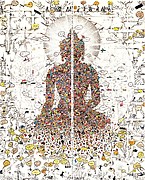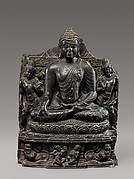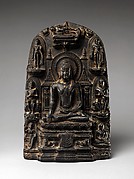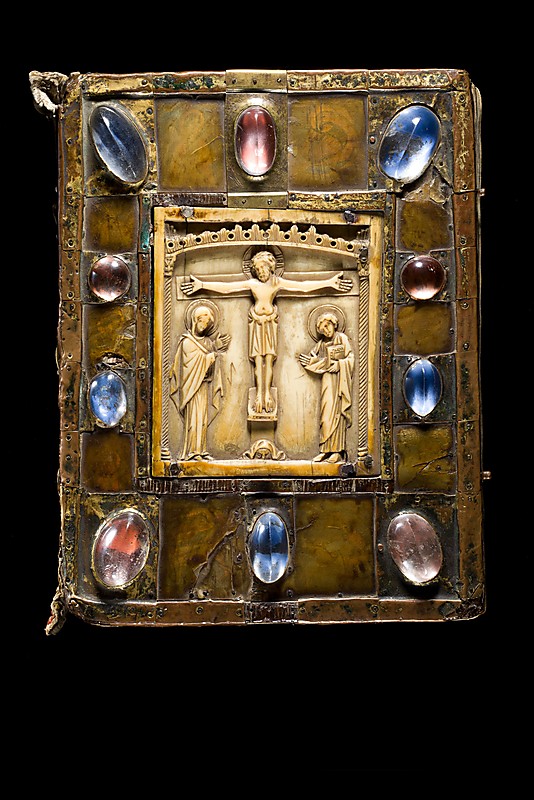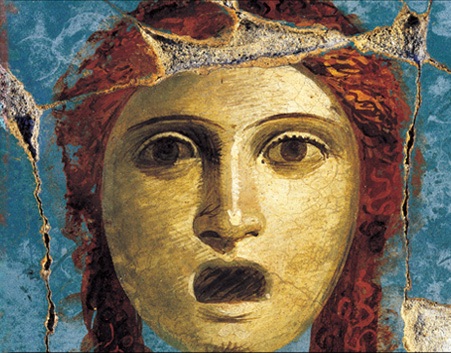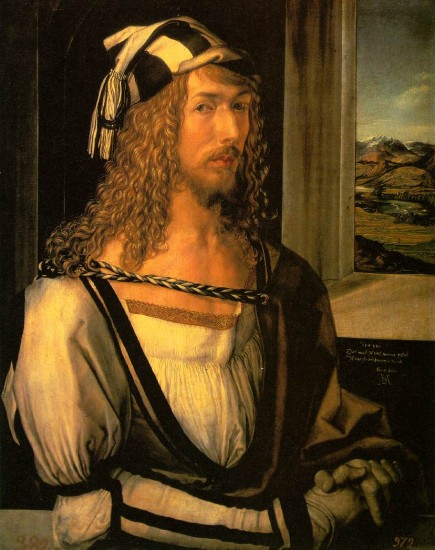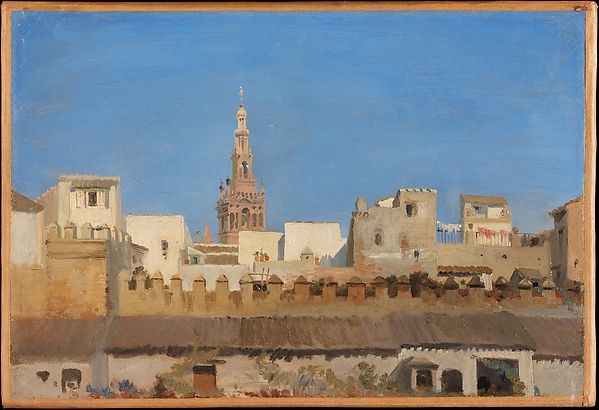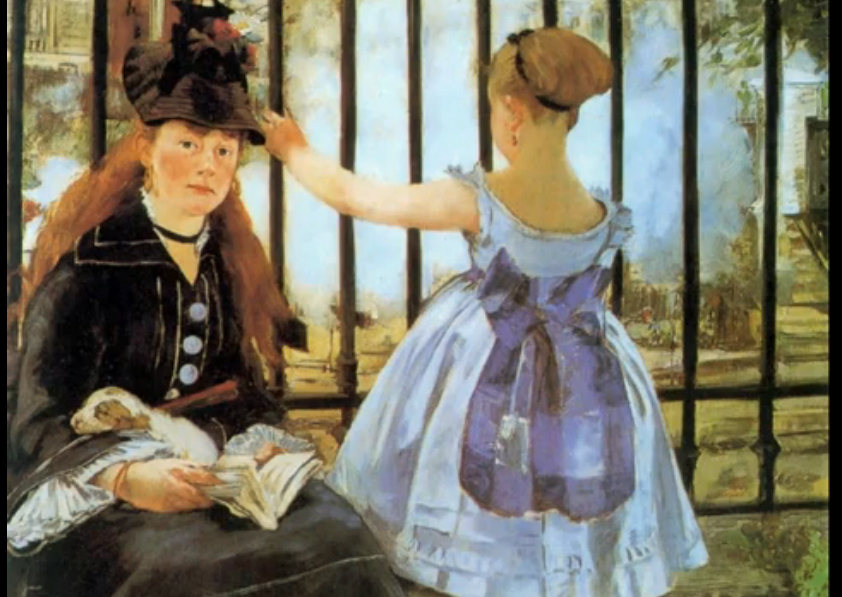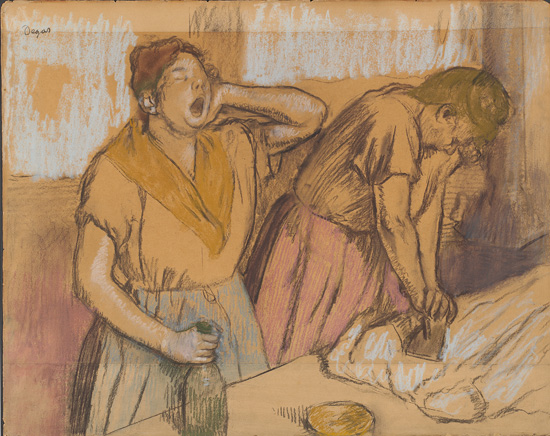Museum Exhibitions
Museum Exhibitions 2014
See Also: ArtlinkGlobal Auction News Advisories at:
http://artlinkglobaladvisory.wordpress.com/
See Also: ArtlinkGlobal Benchmarks for Designers at:
http://www.houzz.com/ideabooks/22926344
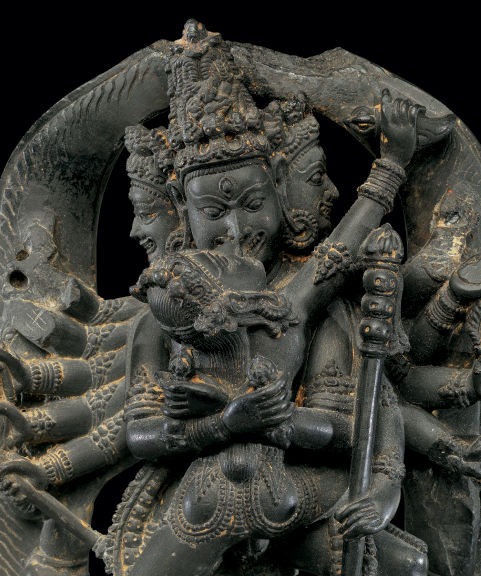
Twelve-Armed Chakrasamvara and His Consort Vajravarahi (detail), ca. 12th century. India, west Bengal or Bangladesh. Phyllite; H. 5 in. (12.7 cm); W. 3 1/8 in. (7.9 cm); D. 1 1/2 in. (3.8 cm). The Metropolitan Museum of Art, New York, Gift of Mr. and Mrs. Perry J. Lewis, 1988 (1988.392)
The publication is made possible through the generosity of the Lila Acheson Wallace Fund
for The Metropolitan Museum of Art, established by the cofounder of Reader’s Digest.
Exhibition Objects
-
Dissected Buddha Gonkar Gyatso (born Lhasa 1961)
-
Seated Buddha Reaching Enlightenment Date: late 10th–11th century
-
Portrait of the Indian Monk Atisha Date: early to mid-12th century
-
Seated Buddha Reaching Enlightenment Date: 11th–12th century
-
Stele with Eight Great Events from the Life of the Buddha Date: 10th century
This exhibition singles out two periods when the Buddhist Tibetan tradition drew from outside influences to develop new vocabularies of form. In the eleventh and twelfth centuries, after a period of political and religious disruption, contact with the great monasteries of North India led to considerable exchange. Looking from the Indian perspective, the exhibition examines how esoteric imagery, texts, and Vajrayana ritual practices contributed to reshaping the complex religious landscape of Tibet. Today, contemporary Tibetan artists are again addressing and incorporating ideas central to the current global reality, in an effort to recontextualize long-standing core Buddhist ideals. The exhibition will include five loans and eighteen objects drawn from department holdings.
Museum Exhibitions 2013
Gospel Book (so-called Small Bernward Gospel): The precious materials constituting this small gospel book were assembled in several stages. The manuscript was already a hundred years old when Bernward of Hildesheim commissioned a new cover, which likely included the tenthcentury Byzantine ivory we see at the center. The bejeweled frame is a twelfth-century addition, probably in honor of Bernward’s canonization. With the bold monogram on the back cover, Bernward asserts his status as owner and patron.
Medieval Treasures from Hildesheim
September 17, 2013–January 5, 2014
Accompanied by a publication
Hildesheim Cathedral has one of the most complete surviving ensembles of church furnishings and treasures in Europe, with many masterpieces made between 1000 and 1250. As a result, it was designated a UNESCO World Cultural Heritage Site in 1985. A major renovation of the cathedral provides an opportunity for this extraordinary exhibition of medieval church treasures. Consisting of about fifty works, the exhibition focuses primarily on Bishop Bernward of Hildesheim (960–1022), one of the greatest patrons of the arts in the Middle Ages. In addition to the famous monumental bronze doors and the column in Hildesheim Cathedral that cannot travel, Bernward commissioned many smaller precious works of art, mostly for his monastic foundation St. Michael’s. A silver crucifix and candlesticks and numerous illuminated manuscripts (that he is known to have commissioned), and the Golden Madonna (that he is believed to have commissioned), are part of the exhibition.
The exhibition also examines the artistic production of Hildesheim in the high Middle Ages, including the monumental bronze baptismal font that is a masterpiece of thirteenth-century metalwork.
Related Events
- Gallery Talk:
Exhibition Tour—Medieval Treasures from Hildesheim - Wednesday, November 20, 10:30–11:30 a.m.
Free with Museum admission - Gallery Talk:
Exhibition Tour—Medieval Treasures from Hildesheim - Tuesday, December 17, 10:30–11:30 a.m.
Free with Museum admission
Pompeii and Herculaneum: two ordinary cities with an extraordinary story
These were not extraordinary cities; they died in an extraordinary way, but they were ordinary ancient Roman cities, and because of this they have been able to become a lens through which we can see and understand a whole civilisation.

Portrait of baker Terentius Neo and his wife. Pompeii, AD 55–79. © DeAgostini/SuperStock
In spring 2013, these two cities and their unique story will be explored in a major exhibition at the British Museum that will – in the words of Museum Director, Neil MacGregor – be a chance ‘to visit the cities and to visit the houses in the cities; to be inside a Roman household, inside a Roman street; to know what it felt like, to know what was going on.’
Through objects from the British Museum collection and an immensely generous loan of 250 objects from Naples, Pompeii and Herculaneum – many of which have never been seen outside Italy – the exhibition will focus on the daily lives of the ordinary people who lived there.
Paul Roberts, Exhibition curator, explained how in exploring daily life we have a chance to see how people like us would have lived in an ancient reflection of our own lives:
‘Daily life; the home, and domestic life, it’s something that we all share. The home gives us a wonderful opportunity to explore how people like us lived in Roman times: perhaps they didn’t all go to the baths, or the amphitheatre, but poor or wealthy they all had a home.’
Through some of the most famous objects to have emerged from the two cities, and finds unearthed during recent archaeological work there, the exhibition will look at the make-up and activity of homes – and the people who lived in them – at both Pompeii and Herculaneum.

Gold bracelet in the form of a coiled snake, 1st Century AD, Pompeii
Often the stories revealed are surprising. For example, from Pompeii, the large industrial centre of the region with a population of around 12-15,000, comes a statue of a woman commemorating her funding – with her own money – of the largest building in the forum, the heart of the city. This, in a male-dominated society where women might not usually be known as the rich patrons of civic monuments.
While at the same time, the more mundane elements of life are revealed in objects such as an extraordinarily well-preserved loaf of bread that, in Paul’s words, ‘went in the oven in AD 79 and came out in the 1930s’.
But of course the reason we know this story and can see these wonderful objects is because of the tragedy which struck in AD 79. Incredible finds from Herculaneum, a smaller seaside town of some 4-5,000 inhabitants, include food, leather, and wooden furniture – from a table to a baby’s cot – and survive only because they were carbonised (turned into charcoal) by the 4-500 degree Celsius volcanic avalanche that engulfed the city.
As Paul explained:
‘We can’t imagine the horror of that day, but we can see what people did. Some of them were practical, taking a lantern or a lamp to help them stumble through the total darkness of the volcanic blizzard. Other people took gold and silver in the form of coins or jewellery. One little girl took her charm bracelet with pieces from all over the Roman world and beyond, such as cowries from the Indian Ocean, amber from the Baltic, rock crystal from the Alps, faience from Egypt. She had this with her when she died on the beach at Herculaneum with hundreds of others.’
Some 2,000 years later that charm bracelet will be among the objects on display at the British Museum next year, allowing us as it does to recall and remember the real people whose lives we are so privileged to be able to see and understand:‘We had to have the death of Pompeii and Herculaneum to know so much about the people who lived there, but it’s their lives that we will be celebrating in this exhibition.’
Albrecht Dürer: Master Drawings, Watercolors, and Prints from the Albertina
March 24–June 9, 2013
Albrecht Dürer (1471–1528) has long been considered the greatest German artist, uniquely combining the status held in Italian art by Michelangelo in the sixteenth century, by Raphael in the 18th and 19th centuries, and by Leonardo da Vinci in our own day.
While Dürer’s paintings were prized, his most influential works were his drawings, watercolors, engravings, and woodcuts. They were executed with his distinctively northern sense of refined precision and exquisite craftsmanship. The finest collection of Dürer’s drawings and watercolors is that of the Albertina in Vienna, Austria. One of the largest in the world, it is distinguished by many of the artist’s most stunning masterpieces: watercolors such as The Great Piece of Turf, a sublime nature study of the Renaissance; chiaroscuro drawings such as The Praying Hands, surely the most famous drawing in the world; and the amazingly precocious silverpoint Self-Portrait at Thirteen, perhaps the earliest self-portrait drawing by any artist.
The Albertina’s works by Dürer have been acquired over many years, but the museum’s ability to amass such a collection of masterpieces results from primary sources that go directly back to the Holy Roman Emperor Rudolf II. Dürer was his favorite artist, and the emperor spared no expense in searching for Dürer’s art. He used imperial ambassadors and the machinery of state to succeed in his purchases, among them extraordinary acquisitions from the Imhoff family in Nuremberg, whose works included Dürer’s personal estate.
This groundbreaking exhibition is a culmination of decades of acquisition, study, and exhibitions of early German art at the National Gallery of Art. It presents 91—including most—of the superb Dürer watercolors and drawings from the Albertina and 27 of the museum’s best related engravings and woodcuts. It also includes 19 closely related drawings and prints from the Gallery’s own collection.
Works by Albrecht Durer
in the National Gallery’s Collection: http://www.nga.gov/cgi-bin/tsearch?artistid=1256
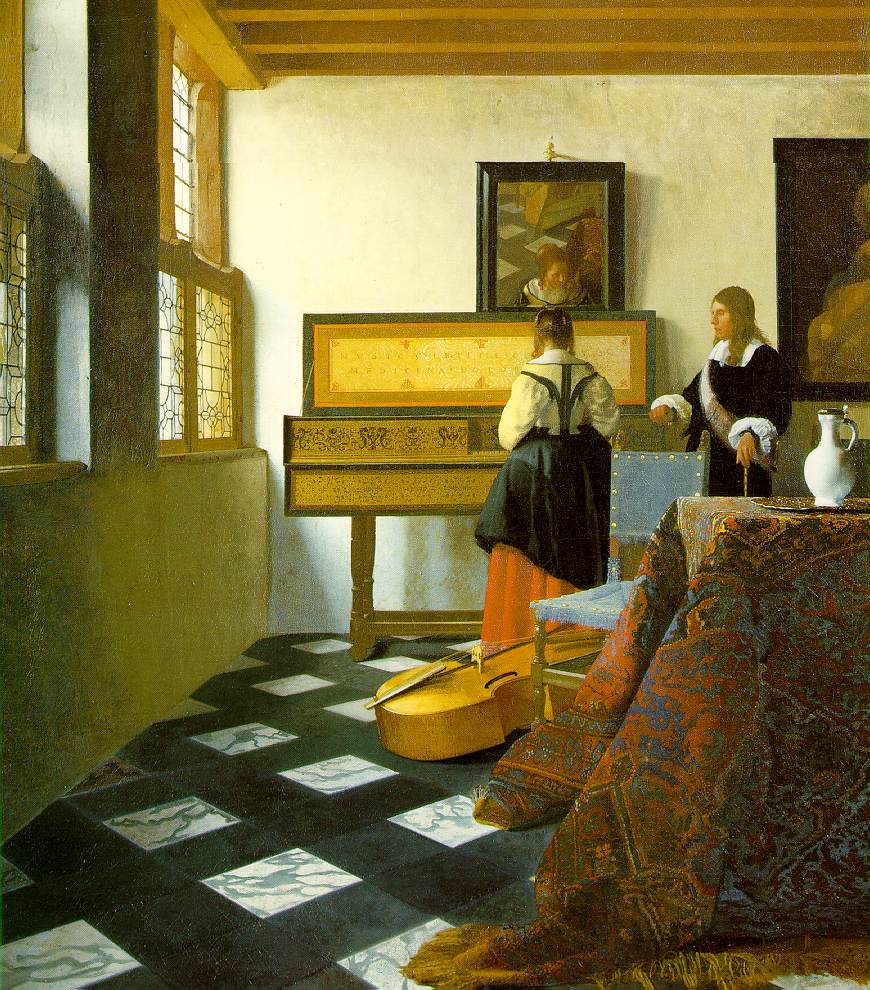
Vermeer and Music: The Art of Love and Leisure
26 June – 8 September 2013
Explore the musical pastimes of 17th-century Netherlands through a lively display combining the art of Vermeer and his contemporaries with rare musical instruments and songbooks of the period.
For the first time the National Gallery’s two paintings by Vermeer, Young Woman Standing at a Virginal and Young Woman Seated at a Virginal will be brought together with Vermeer’s Guitar Player, which is currently on exceptional loan from the Iveagh Bequest, Kenwood House.
These beautiful and evocative paintings by Vermeer will be displayed with works by his contemporaries and juxtaposed with musical instruments and songbooks from the same period.
Music was one of the most popular themes in Dutch painting, and carried many diverse associations. In portraits, a musical instrument or songbook might suggest the education or social position of the sitter; in scenes of everyday life, it might act as a metaphor for harmony, or a symbol of transience.
The exhibition will display 17th-century virginals (a type of harpsichord), guitars and lutes alongside the paintings to offer a unique insight into the painters’ choice of instruments, and the difference between the real instruments and the way in which the painters chose to represent them.
The exhibition will also incorporate music of the era in various ways, enriching the visitor’s experience of the serene and elegant ambiance created in paintings by Vermeer and other masters of the Dutch Golden Age.

The Frick Collection: ‘Piero della Francesca in America’
February 12, 2013 to May 19, 2013
Metropolitan Museum of Art: ‘The Path of Nature:
French Paintings from the Wheelock Whitney
Collection, 1785-1850’
“Sparkle with repose” was the effect the British artist John Constable said he was after in his landscapes. His French contemporaries had the same idea. Today, Constable’s a star. But León Pallière? Adrien Dauzats? Alexandre-Hyacinthe Dunouy? Only wonkish scholars are likely to know their names. Lucky for them, and for us, that one of those scholars is Whitney Wheelock III, who has a passion for French art from the years between neo-classicism and Romanticism, and a special love for gleaming little oil sketches done out of doors. In 2003 he gave his pictures to the Met, where 50 of them, along with some exquisitely funky genre paintings, make up this small gem of a show.
— Holland Cotter
Through April 21
Manet: Portraying Life
The Royal Academy, London: 26 January – 14 April 2013
This singularly important exhibition is the first ever retrospective devoted to the portraiture of Edouard Manet. Spanning the entire career of this enigmatic and at times controversial artist, ‘Manet: Portraying Life’ brings together works from across Europe, Asia and the USA.
Manet’s engagement with portraiture has never been explored in exhibition form before, despite it constituting around half of his artistic output. Manet painted his family, friends and the literary, political and artistic figures of his day, giving life not only to his subjects but also to Parisian society of the time.
The exhibition consists of more than 50 works, among them are portraits of Manet’s most frequent sitter, his wife Suzanne Leenhoff, luminaries of the period Antonin Proust, Émile Zola and Stéphane Mallarmé, and scenes from everyday life revealing Manet’s forward-thinking, modern approach to portraiture.
Organization
‘Manet: Portraying Life’ has been organised by the Royal Academy of Arts, London, in collaboration with the Toledo Museum of Art, Ohio. The exhibition has been curated by MaryAnne Stevens, Director of Academic Affairs, Royal Academy of Arts and Dr Larry Nichols, Toledo Museum of Art, Ohio.
M a t i s s e : In Search of True Painting
to March 17, 2013 The Metropolitan Museum of Art, NYC
Henri Matisse (1869–1954) was one of the most acclaimed artists working in France during the first half of the twentieth century. The critic Clement Greenberg, writing in The Nation in 1949, called him a “self-assured master who can no more help painting well than breathing.” Unbeknownst to many, painting had rarely come easily to Matisse. Throughout his career, he questioned, repainted, and reevaluated his work. He used his completed canvases as tools, repeating compositions in order to compare effects, gauge his progress, and, as he put it, “push further and deeper into true painting.” While this manner of working with pairs, trios, and series is certainly not unique to Matisse, his need to progress methodically from one painting to the next is striking. Matisse: In Search of True Painting presents this particular aspect of Matisse’s painting process by showcasing forty-nine vibrantly colored canvases. For Matisse, the process of creation was not simply a means to an end but a dimension of his art that was as important as the finished canvas.
Asia Week New York scheduled for March 15-23, 2013
NEW YORK – The collaboration of a top-tier roster of international Asian art specialists, major auction houses, museums and Asian cultural institutions will take place throughout metropolitan New York from March 15-23, 2013, it was announced by Henry Howard-Sneyd, Chairman of Asia Week New York, and Sotheby’s Vice-Chairman Asian Art, Americas. A private, invitation-only reception at the Solomon R. Guggenheim Museum will kick-off Asia Week New York on March 15.
“As we head into our fifth year, it is extremely gratifying to see how important Asia Week New York has become for so many international collectors, curators, scholars and Asian Art enthusiasts,” said Howard-Sneyd. “And we are especially delighted that the Guggenheim Museum reception will set the stage for the exciting week of activities.”
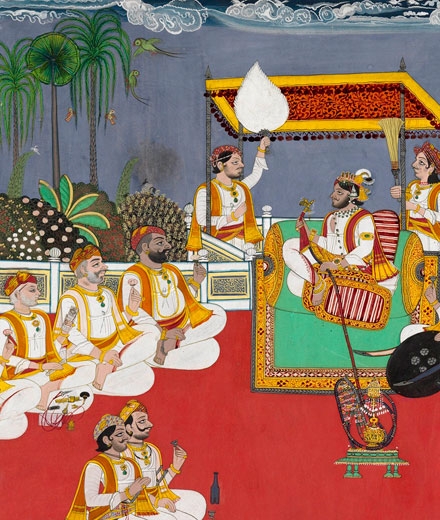
Asia Week New York continues to uphold its original commitment to shine a light on a different cultural institution each year with the announcement of the Guggenheim Museum as the 2013 location. Last year, the opening night reception was held at the Morgan Library and Museum, using the opportunity to share rarely seen Asian manuscripts and works of art from its collection. In prior years, receptions for Asia Week New York were held at the Rubin Museum and Asia Society, respectively. “The selection of these diverse cultural institutions reinforces just how important the Asian art field has become to New York’s art scene,” said Howard-Sneyd.
The week-long celebration is filled with a nonstop schedule of simultaneous gallery open houses, Asian art auctions as well as numerous museum exhibitions, lectures, and special events. Participants from England, France, Italy, Japan, Thailand, and the United States unveil an extraordinary array of treasures, which they set aside for their Asia Week New York debut. To help visitors easily navigate the week’s myriad activities, a comprehensive guide with maps will be available at the galleries, auction houses, and cultural institutions, starting February 2013 and online at www.AsiaWeekNewYork.com. For the first time this year, an abridged version of the website will be available in Chinese.
For more information visit www.AsiaWeekNewYork.com
Color, Line, Light:
French Drawings, Watercolors, and Pastels from Delacroix to Signac
Please enable flash to view this media.
Download the flash player.
The National Gallery of Art: January 27–May 26, 2013 James T. Dyke is one of the most astute American collectors of 19th- and 20th-century French works on paper. Some 100 drawings and watercolors from his collection showcase the broad development of modern draftsmanship in France, from romanticism and realism through the impressionists, Nabis, and neo-impressionists. Artists working from 1830 to 1930, including Delacroix, Monet, Degas, Cézanne, and Signac, reveal a rich diversity of subjects, styles, and techniques.
- Economist and Art Historian:
- Proprietary search, authentication and strategic implementation at auctions worldwide

